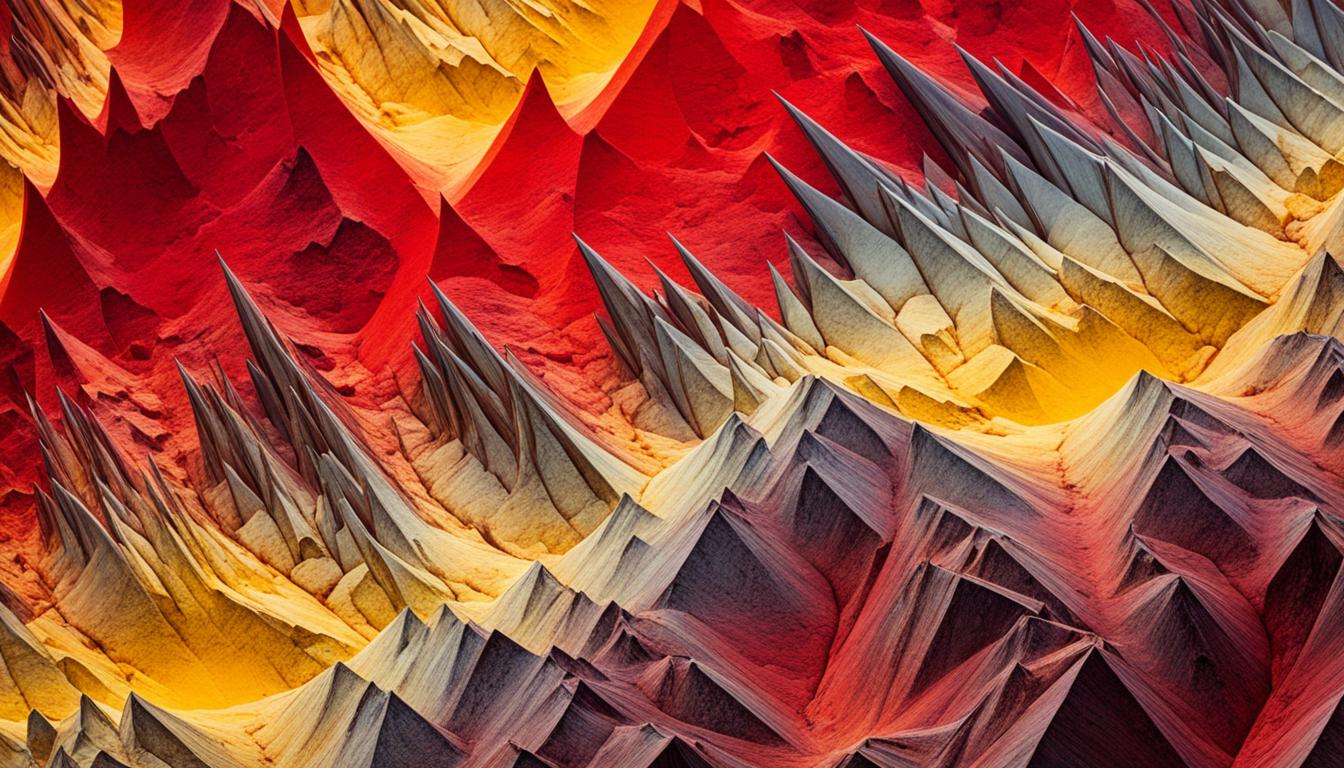Kidney stones are painful and common. They form when crystalline minerals gather in the kidney. Many things can cause them, like what you eat, your genes, and where you live. They cause serious symptoms, including bad pain in your side, changes in how your urine looks, urine burning, and feeling sick. If not treated, kidney stones can block your kidney, cause kidney failure, or severe infections.
To find out if you have kidney stones, doctors use urine tests and pictures like ultrasounds, X-rays, or CT scans. These show the stones’ size, where they are, and what they’re made of. Knowing these helps doctors plan the best treatment. Finding the stones early and treating them is key to avoiding problems and helping you get better.
Key Takeaways:
- Kidney stones form due to the aggregation of crystalline minerals in the kidney chambers.
- Symptoms of kidney stones include severe flank pain, changes in urine color, urinary burning, and nausea.
- Diagnosis involves urinalysis and radiological methods such as ultrasound, X-ray, or CT scan.
- Untreated kidney stones can lead to kidney obstruction, kidney failure, and severe infections.
- Early detection and intervention are crucial for effective management of kidney stones.
Types of Kidney Stones and Risk Factors
Kidney stones are hard deposits that form in the kidneys. Most are made of calcium oxalate. But, there are also uric acid stones, cystine stones, and struvite stones.
The chance of getting kidney stones is higher for men. Having a family history of kidney stones makes it more likely for you. Factors like being overweight, diabetes, and certain hormonal issues can also make stones more likely. Problems in the shape of your urinary tract can add to these risks.
It’s key to know the different types of stones and what can make them form. This knowledge helps in preventing kidney stones. By working to control these risks, you can lower your chances of getting kidney stones.
Kidney Stone Types
| Kidney Stone Type | Description |
|---|---|
| Calcium Oxalate Stones | These are very common, forming when calcium and oxalate combine in the urine. |
| Uric Acid Stones | They arise from too much uric acid in the urine. They are common in people with gout or who eat a lot of high-purine foods. |
| Cystine Stones | These stones happen because of a genetic issue. It makes the urine have too much cystine. |
| Struvite Stones | Urinary tract infections by certain bacteria cause these stones. They can get big quickly. |
Risk Factors for Kidney Stone Formation
- Men face a higher risk of kidney stones than women do.
- If kidney stones run in your family, your risk goes up.
- Obesity, diabetes, and certain hormonal issues can make stones more likely.
- Having a weird shape or problem with your urinary tract can also increase your risk.
Symptoms, Diagnosis, and Prevention of Kidney Stones
Kidney stones bring various symptoms that can’t be overlooked. The main sign is severe back pain. This pain can spread to your belly or groin and come and go in waves. It can also change in how strong it feels. Look out for these signs too: blood in urine, painful urination, and frequent bathroom trips.
Doctors use different ways to find kidney stones. They might order an X-ray, ultrasound, or CT scan. These tests show where the stones are. They also can check your urine and blood. This helps them find out what’s causing the stones.
To avoid kidney stones, make sure to drink lots of water. Add plenty of fruits, vegetables, and whole grains to your meals. But cut back on salty and oxalate-heavy foods like spinach. Managing health issues like being overweight or having diabetes is also important.
These steps can help lower your risk of getting kidney stones. But if you ever feel the symptoms, see a doctor. Taking early action can help prevent the stones from getting worse.
Preventive Measures for Kidney Stone Formation
- Stay adequately hydrated by drinking plenty of water.
- Maintain a balanced diet, including a variety of fruits, vegetables, and whole grains.
- Limit the intake of sodium and oxalate-rich foods.
- Manage conditions like obesity and diabetes.
| Symptoms of Kidney Stones | Diagnosis of Kidney Stones | Preventive Measures |
|---|---|---|
| Severe back pain | Imaging tests (X-ray, ultrasound, CT scan) | Stay hydrated |
| Blood in urine | Urine tests | Maintain a balanced diet |
| Painful urination | Blood tests | Limit sodium and oxalate intake |
| Frequent urination | Manage obesity and diabetes |
Stem Cell Therapy for Kidney Stones
Stem cell therapy shows a lot of promise in dealing with kidney stones. It uses stem cells to repair the kidney’s damaged parts, helping it heal naturally. This method could boost kidney health and lower the chances of stones coming back.
Although it’s still being tested, the early signs are hopeful. It could be a less invasive and effective way to treat kidney stones than current options. This therapy encourages the body to heal itself, which might help patients over the long term.
There’s more to learn about how effective stem cell therapy can be for kidney stones. But, it’s a step forward that offers hope to many who are in pain. Doctors working on this new treatment aim to make life better for their patients and change how we deal with kidney stones.

